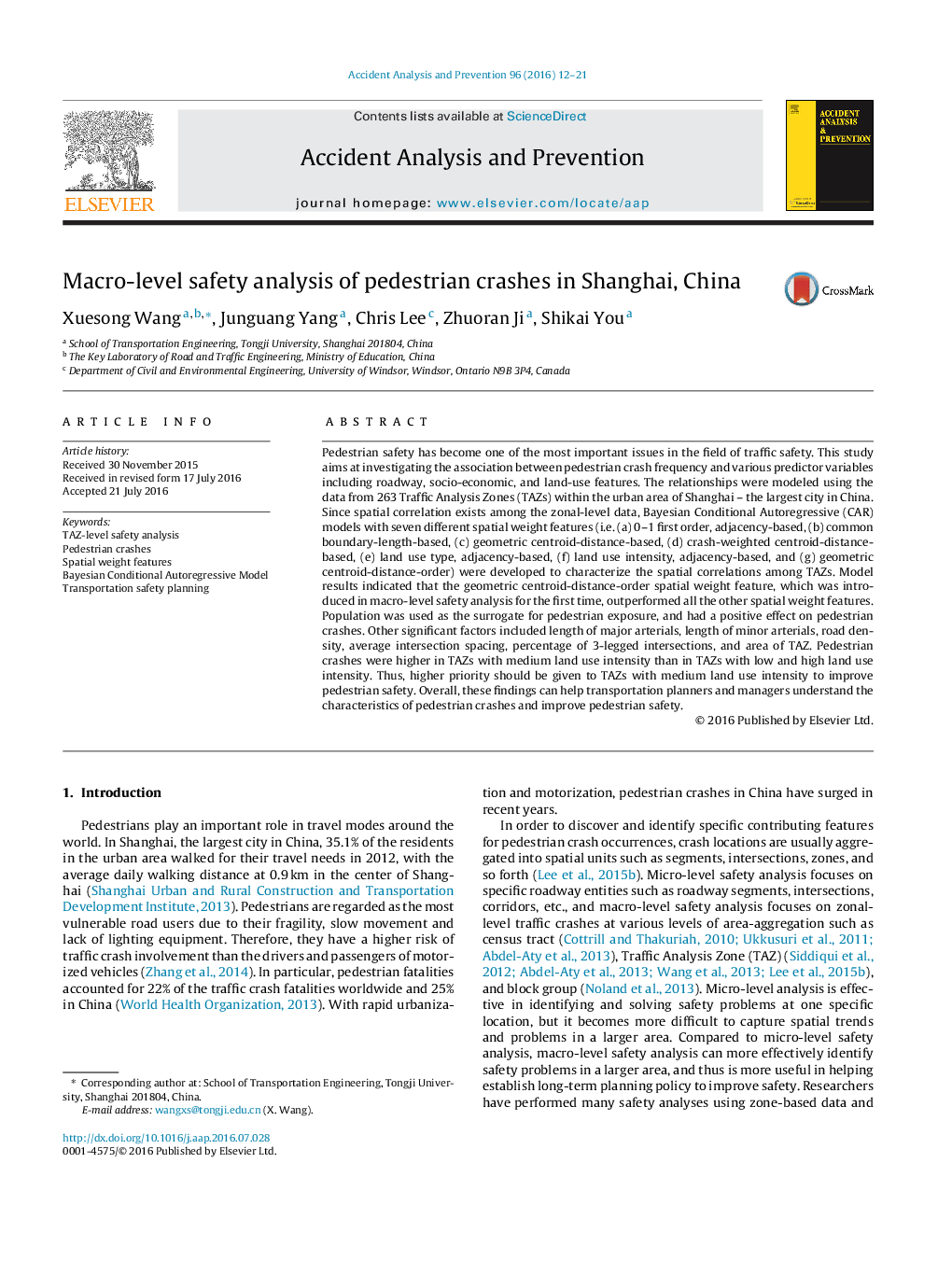| Article ID | Journal | Published Year | Pages | File Type |
|---|---|---|---|---|
| 571880 | Accident Analysis & Prevention | 2016 | 10 Pages |
•This study aims at investigating the association between pedestrian crashes and various roadway, socio-economic, and land-use features.•Bayesian Conditional Autoregressive models considering spatial correlation among Traffic Analysis Zones (TAZs) were established.•Seven spatial weight features were developed and compared to characterize the spatial correlations among TAZs.•Geometric centroid-distance-order, which was introduced in macro-level safety analysis for the first time, performed best.•More pedestrian crashes were associated with larger population, higher road density, and medium land use intensity.
Pedestrian safety has become one of the most important issues in the field of traffic safety. This study aims at investigating the association between pedestrian crash frequency and various predictor variables including roadway, socio-economic, and land-use features. The relationships were modeled using the data from 263 Traffic Analysis Zones (TAZs) within the urban area of Shanghai – the largest city in China. Since spatial correlation exists among the zonal-level data, Bayesian Conditional Autoregressive (CAR) models with seven different spatial weight features (i.e. (a) 0–1 first order, adjacency-based, (b) common boundary-length-based, (c) geometric centroid-distance-based, (d) crash-weighted centroid-distance-based, (e) land use type, adjacency-based, (f) land use intensity, adjacency-based, and (g) geometric centroid-distance-order) were developed to characterize the spatial correlations among TAZs. Model results indicated that the geometric centroid-distance-order spatial weight feature, which was introduced in macro-level safety analysis for the first time, outperformed all the other spatial weight features. Population was used as the surrogate for pedestrian exposure, and had a positive effect on pedestrian crashes. Other significant factors included length of major arterials, length of minor arterials, road density, average intersection spacing, percentage of 3-legged intersections, and area of TAZ. Pedestrian crashes were higher in TAZs with medium land use intensity than in TAZs with low and high land use intensity. Thus, higher priority should be given to TAZs with medium land use intensity to improve pedestrian safety. Overall, these findings can help transportation planners and managers understand the characteristics of pedestrian crashes and improve pedestrian safety.
